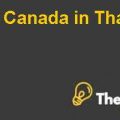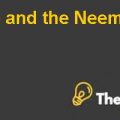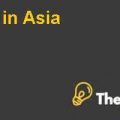Evaluation of the alternative finance strategies
There are three broad options available to KTM to finance the exit strategy and to sponsor the expansion of its product line to more sophisticated on- road motorcycles. The company can execute its strategy through debt or equity financing and a combination of both the financing strategies can also be adopted to achieve the long-term perspective of the company.
There are different financing options available to KTM. Each of the financing options has a significant impact on the capital and ownership structure of the company. An analysis has been carried out below to evaluate the suitability and acceptability of all available options
- Initial public Offering (IPO)
Initial Public Offering (IPO) is the first time offer of common stock of a private limited company to the general public. IPO wil be a good strategic move for KTM because it provides an opportunity to the company to easily assess the desired funds and to finance its relative capital exit and growth strategy. Through IPO, the company can obtain a possession in financial market which will benefit the company to raise additional funds in future. Further, it will also provide an awareness of the company and the long range of products to the general public, which will increase the demand of the products and provides an opportunity for the company to generate higher profits but; on the other hand IPO incurs high cost of administration, accounting and marketing.
If the company uses IPO as a means of financing the strategies, it will increase the equity portion of the total equity and liability and will reduce the D/E ratio of the company. Currently the company has D/E ratio of 6.9, financing the strategy through this approach will reduce the D/E ratio further.
Financing the company’s strategy through IPO will be an expensive mode of financing because the shareholders retain the residual interest in the profits of the company and the dividend is not a deductable expense in calculating the taxable profits. On the other hand, it will also have some benefits as well, like the company will not be obliged to pay dividend to the shareholders periodically as opposed in case of debt financing, where periodic payments are required to settle principal and interest amount, which will solve the liquidity problems of the company and will enable the company to invest additional funds to the operations of the company.
- Other strategic investors
KTM has also an option available to find another institutional investor like BC that will buy the stake in the company. Previously, Harley Davidson was one of the options available to KTM that could buy the stake in the company but the transaction didn’t succeed. Harley was an attractive option for KTM because it would have benefited the company to enhance the dealership network of the company through their core marketing and advertising techniques, Harley could have benefited the company to increase the sale for its long range of product.
If the company succeeds to find another institutional investor, then the stake will change hands from one investor to the other. The major concern about the other strategic investors is that they will exercise a high-level of control over the operations of the company and will execute high pressure on the management to fulfill the desired targets, either realistic or unrealistic. Further, the investors will also demand higher profits for their shareholding in the company, which may not always be possible for the company because the company has recently faced a downturn in their profits and have gradually grown in the recent years.
- Debt Offering
Another option available to the company is that the company can finance its strategy through raising debts, either from bank or from other private investors, depending on the interest rate demanded by the lender and the terms of the principal and interest payment.
If the company decides to finance its strategy through debt financing, it will further increase the D/E ratio of the company. The company had current D/E ratio of 6.9% in 2002, if the company adopts this mode of financing, it will further increase the ratio and the company may face difficulty in raising further finance in future to sponsor its growth strategy. Further, the company may face liquidity problem because it will raise an excessive pressure on the company to pay principal and interest amount but on the other hand, debt financing has some benefits as well, the debt financing is a less expensive mode of financing as compared to equity financing where the shareholders have a residual interest in the profits of the company...................................
This is just a sample partial case solution. Please place the order on the website to order your own originally done case solution.













